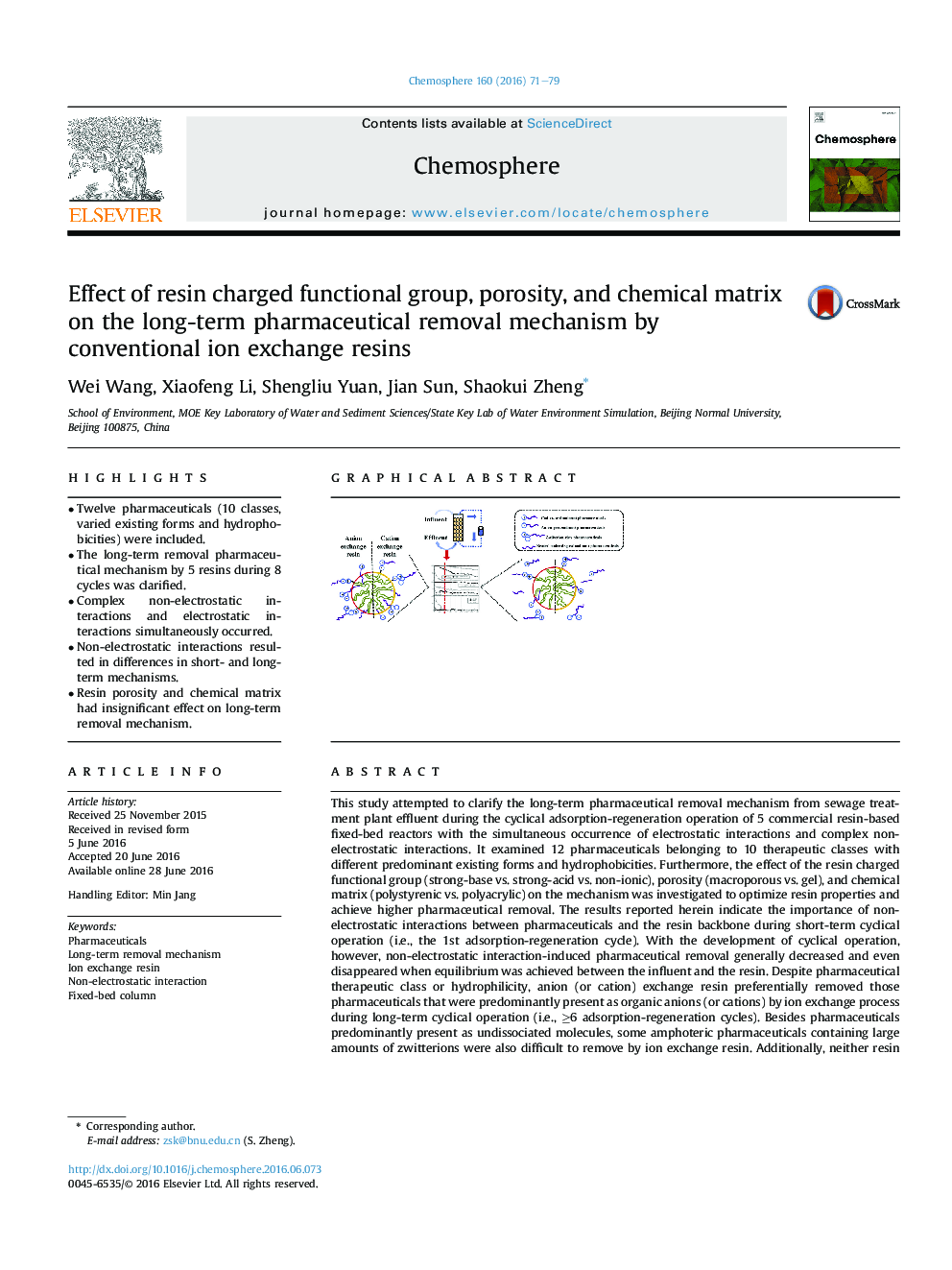| کد مقاله | کد نشریه | سال انتشار | مقاله انگلیسی | نسخه تمام متن |
|---|---|---|---|---|
| 4407389 | 1618811 | 2016 | 9 صفحه PDF | دانلود رایگان |
• Twelve pharmaceuticals (10 classes, varied existing forms and hydrophobicities) were included.
• The long-term removal pharmaceutical mechanism by 5 resins during 8 cycles was clarified.
• Complex non-electrostatic interactions and electrostatic interactions simultaneously occurred.
• Non-electrostatic interactions resulted in differences in short- and long-term mechanisms.
• Resin porosity and chemical matrix had insignificant effect on long-term removal mechanism.
This study attempted to clarify the long-term pharmaceutical removal mechanism from sewage treatment plant effluent during the cyclical adsorption-regeneration operation of 5 commercial resin-based fixed-bed reactors with the simultaneous occurrence of electrostatic interactions and complex non-electrostatic interactions. It examined 12 pharmaceuticals belonging to 10 therapeutic classes with different predominant existing forms and hydrophobicities. Furthermore, the effect of the resin charged functional group (strong-base vs. strong-acid vs. non-ionic), porosity (macroporous vs. gel), and chemical matrix (polystyrenic vs. polyacrylic) on the mechanism was investigated to optimize resin properties and achieve higher pharmaceutical removal. The results reported herein indicate the importance of non-electrostatic interactions between pharmaceuticals and the resin backbone during short-term cyclical operation (i.e., the 1st adsorption-regeneration cycle). With the development of cyclical operation, however, non-electrostatic interaction-induced pharmaceutical removal generally decreased and even disappeared when equilibrium was achieved between the influent and the resin. Despite pharmaceutical therapeutic class or hydrophilicity, anion (or cation) exchange resin preferentially removed those pharmaceuticals that were predominantly present as organic anions (or cations) by ion exchange process during long-term cyclical operation (i.e., ≥6 adsorption-regeneration cycles). Besides pharmaceuticals predominantly present as undissociated molecules, some amphoteric pharmaceuticals containing large amounts of zwitterions were also difficult to remove by ion exchange resin. Additionally, neither resin porosity nor chemical matrix had any significant effect on the long-term pharmaceutical removal mechanism.
Figure optionsDownload as PowerPoint slide
Journal: Chemosphere - Volume 160, October 2016, Pages 71–79
